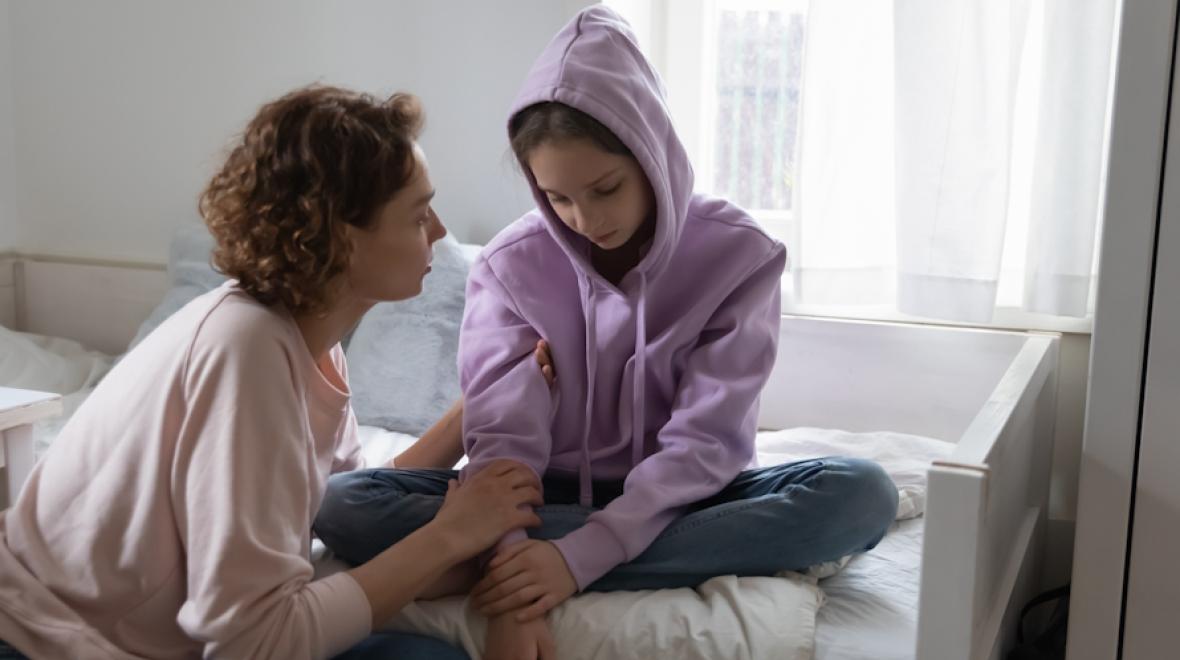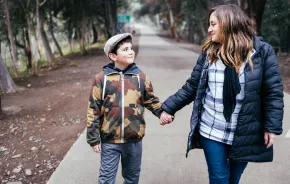
Editor's note: This article was sponsored by Seattle Children's Hospital.
From “stranger danger” to bullying, parents prioritize conversations that inform their children about potential safety risks. Too often, though, suicide is missing from that list of tough-but-important parent/child talk topics.
Talking about suicide can dispel myths and create a safe space for information and questions, health experts say. Normalizing these kinds of conversations can encourage children to reach out if they experience suicidal feelings, as well as convey the message that help and resources are available.
“Make it a common conversation so it’s not a secretive, scary topic,” said Leah McCartney, a program management specialist with Seattle Children’s Suicide Prevention Program. “That way, if it comes up, you’ve already built this rapport to talk about it. This is part of your child’s overall health and it should be approached that way.”
Nationwide, the need to identify kids at risk and connect them with services is urgent: Suicide is the second leading cause of death among people ages 10 to 24, and the rates have been rising for decades, according to the American Academy of Pediatrics. The pandemic only exacerbated that upward trend, with research showing higher-than-expected suicide deaths among children ages 5 to 12.
Suicide screening can identify at-risk youth
In an effort to combat these troublesome statistics, Seattle Children’s Hospital launched its youth suicide screening program several years ago. Since the majority of youth who died by suicide had a healthcare contact in the last year, screenings are a way for health providers to identify people at risk, and direct them to preventative care. At Seattle Children’s, the screening questionnaire is given to children ages 10 and over in outpatient settings, including well-child visits.
Even though some parents might hesitate to discuss the topic, research shows that asking about suicide does not increase someone’s risk, McCartney pointed out. On the contrary, studies have found that talking about suicide actually lowers someone’s chances of acting on those feelings. Plus, avoiding the conversation sends the wrong signal.
“If you’re afraid to talk about a topic, that shows the child that what they’re experiencing is so scary and inappropriate it’s wrong,” she said. “Avoiding the question only perpetuates the stigma and isolation of the person’s experience.”
How to respond if your child mentions suicide
At home, parents should engage in an immediate discussion if a child directly mentions thoughts of suicide, even if the reference is casual. A conversation may also be warranted if you notice a child acting withdrawn or experiencing drastic mood shifts. Another sign to watch for: evidence of other self-harm behaviors, such as cutting, that heighten one’s risk for suicide.
“As calmly as possible, ask them directly: Are you thinking about suicide?” said Isabell Sakamoto, a Suicide & Injury Prevention Program Manager at Seattle Children’s. “When in doubt, it’s better to ask.”
If they say no, it’s still a good opportunity to have a deeper conversation about the seriousness of such a statement. That communication lays the groundwork for open discussions in the future.
National suicide lifeline can help
If a child confirms they’re having the suicidal thoughts, praise them for sharing these thoughts with you, explain that you care about them and want to know more.
“Always hold space for their feelings, validate them and thank them for sharing,” McCartney said. “It’s really hard for people to share.”
After expressing that, ask, “Have you thought about how or when you might kill yourself?”
After understanding the specific thoughts your child is having, you’ll want to discuss how you can support your child when they are distressed or having suicidal thinking. Knowing whether they have created a specific plan can inform your next steps, whether it’s calling the 988 Suicide and Crisis Lifeline for guidance, heading to the emergency department or making an appointment with your primary care provider.
Calling or texting the Crisis Lifeline (988) can help parents and children figure out the immediate next steps and how to connect to local resources. The Lifeline offers a free, confidential 24-7 line for people having suicidal thoughts or emotional distress.
Reduce access to lethal means
While you’re getting a child connected to the right services, it’s important to increase supervision and reduce access to lethal means, the Seattle Children’s team says. This means knowing where your child is and checking on them frequently. Make sure you have a way to contact them.
You’ll also want to make sure any lethal means — such as firearms or medications — are removed from your home, or locked and stored in a place your child can’t access. Safe storage for firearms means unloaded and locked up, with ammunition locked in a different area. Medications should be reduced in quantity or locked up as well. Remove any other objects that your child has mentioned they may use to harm themselves.
“We specifically mean removing and locking up — not putting away or hiding,” McCartney said. “Teenagers are very good at finding things.”
The idea is to reduce the time and distance between someone’s thoughts and the methods required to act on them, giving them time to rethink their decision, Sakamoto said. That’s especially relevant for teenagers who often experience the impulsivity that comes from a developing brain.
“Most suicides are impulsive,” McCartney added. “People don’t remain in high suicidal crisis for long periods of time.”
Early conversations can improve outcomes
Indeed, there is a good chance that early intervention efforts and strong communication can help youth move past the suicidal thoughts.
“Just because someone experiences this as a teen, doesn’t mean it’s going to perpetuate throughout the course of their life,” McCartney said.
Having those early conversations paves the way for open discussions throughout adolescence, Sakamoto added.
“It’s never going to get easier if we don’t talk about it,” she said. “This is an opportunity to develop those skills and connect with these resources.”
|
Sponsored by: |












